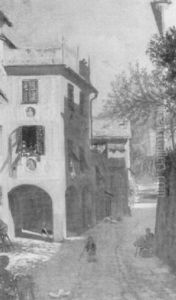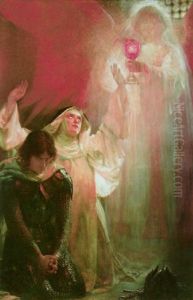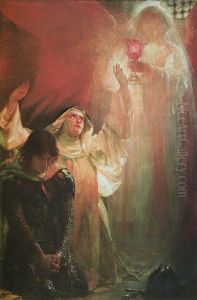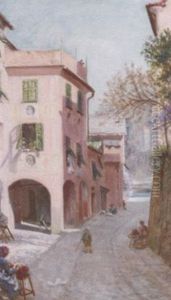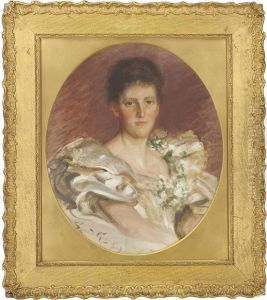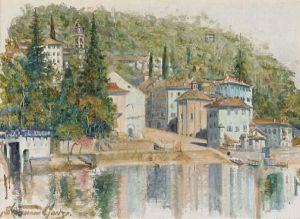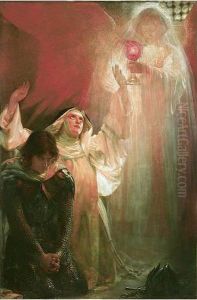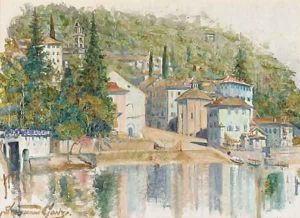Sigismund Christian Hubert Goetze Paintings
Sigismund Christian Hubert Goetze was a distinguished British painter and patron of the arts, whose career spanned the late 19th and early 20th centuries. Born in London, England, Goetze showed an early interest in art, which was nurtured through his education and travels. Despite the expectations to join the family business, Goetze was determined to pursue a career in the arts. He studied at the Slade School of Fine Art in London, where he honed his skills and developed a distinct style that blended classical influences with contemporary themes.
Goetze's work was notable for its historical and allegorical subjects, rendered with meticulous detail and a rich use of color. He gained recognition for his mural paintings, which adorned several public buildings and private residences in the UK. One of his most significant commissions was for the decoration of the Central Criminal Court in London, also known as the Old Bailey, where his murals still stand as a testament to his skill and vision.
Beyond his contributions as an artist, Goetze was a generous patron of the arts. He supported emerging artists and contributed to the establishment of galleries and art institutions. His home, Grove House in London, became a gathering place for artists, writers, and intellectuals of the time, where ideas and inspirations were freely exchanged.
Despite his success, Sigismund Goetze's work fell into relative obscurity in the decades following his death. However, recent years have seen a renewed interest in his life and work, recognizing him as a significant figure in the British art scene of the late 19th and early 20th centuries. Goetze's legacy is not only in the art he created but also in the support and encouragement he provided to the artistic community during his lifetime.

